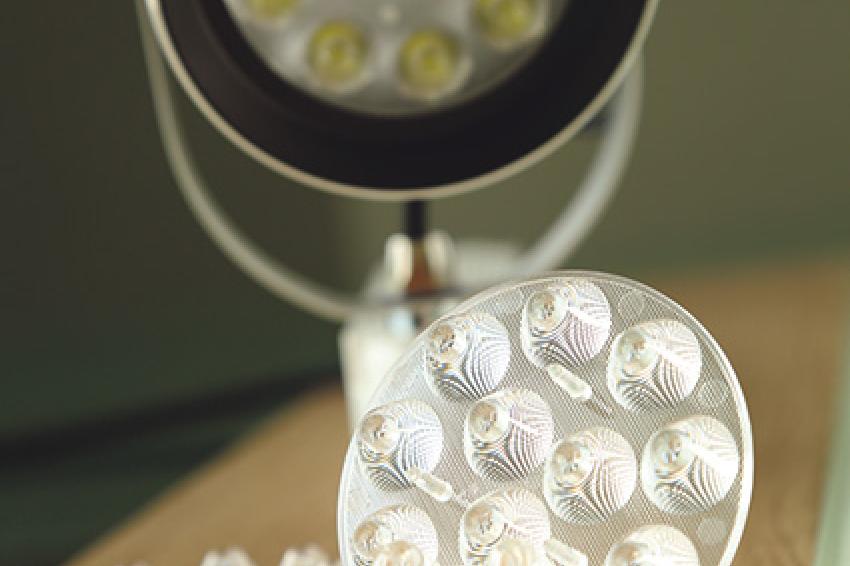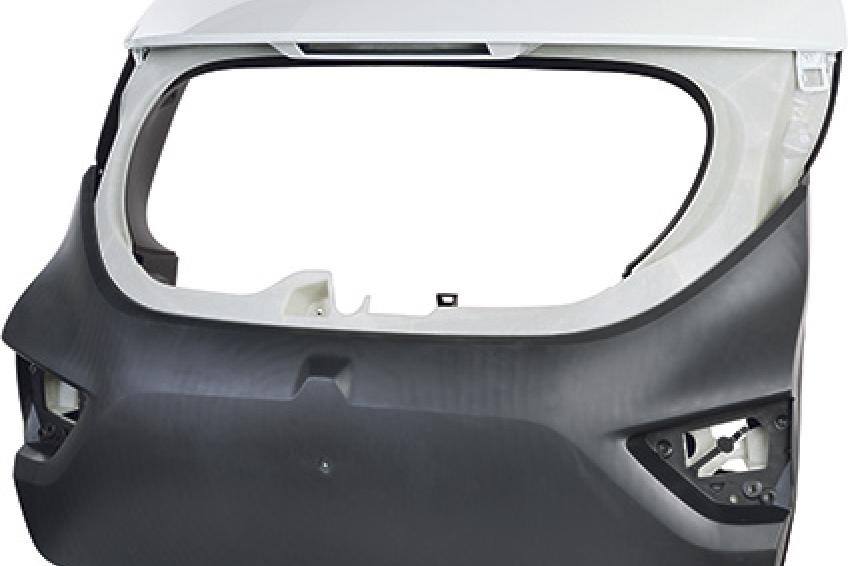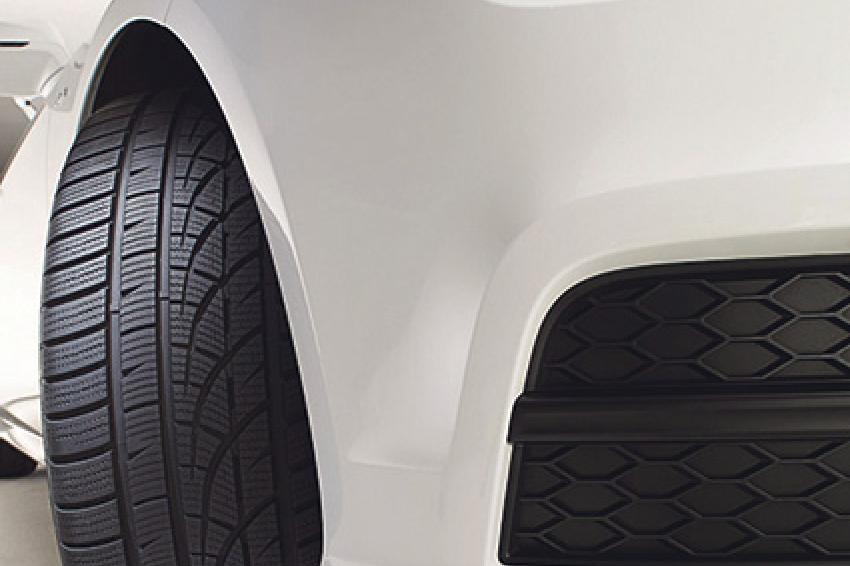Material Innovations Steer the Drive for more sustainable products
10.10.2013 -
Corporations Get a Push from Plastics - For global material companies such as Styron, R&D departments have become increasingly important to enhance our customers' sustainability efforts. In every region and every market, sustainability is high on the agenda, primarily because of increased regulation but also to a large extent because of increased customer awareness and demands.
Consequently, plastics innovations have become critical to the overall performance of end-applications in several markets and are intrinsically linked to the sustainability strategies of corporations. With a strong commitment to sustainability, Styron continues to push the technology boundaries in markets such as electrical and lighting, automotive and tires by addressing considerations such as down-gauging, flame retardancy and low rolling-resistance. Styron's global R&D team is continuously on the lookout for high performance products and engineering processes that help to ensure safe, long-lasting operation of sustainable applications every step of the way.
Making A Right Turn Towards Improved Energy Efficiency
The electric vehicle (EV) market is gaining momentum with traditional automakers recognizing the need to move into this direction. Especially in electrical cars, lightweight is an area to address. Prior to the launch of some of the new electrical car models, Styron Automotive has been collaborating closely with several of the key electrical car producers to considerably decrease the weight of interior components.
Also, for EVs to gain widespread consumer adoption, an infrastructure of charging units outside and inside the home is critical. Electrical vehicle charging units are a growing application for Styron, with special demands on the polymer performance, particularly in terms of design freedom, impact at a range of temperatures, extreme mechanical loads and resisting vandalism, while providing ignition resistance. Styron has been closely collaborating with the utility market, especially in Southern Europe, to develop the next generation of charging stations made with polycarbonate (PC)/Acronitrile-butadiene-styrene (ABS) blends. Due to its mechanical and physical properties, PC/ABS is an appealing choice of material. The chargers' casings can withstand heat, aging and humidity, while their internal electrical connections exhibit enhanced functional longevity compared to traditional materials such as steel.
Styron's next generation of charging stations are being developed with advanced resins that address all performance requirements, in combination with an effective chlorine- and bromine-free flame retardant package to support sustainability requirements.
Illuminating the Road to Improved Light Efficiency
When it comes to lighting efficiency, LED (solid-state) lighting is playing and will continue to play an increasing role in the marketplace. Energy Star estimates that residential LED lighting uses at least 75% less energy and lasts at least 15 times longer than incandescent lighting. Polycarbonate resins are an important component in LED lighting, and have proved to be a more sustainable option, not only because of durability, but also because they offer high transparency for LED display lighting and can be suitably modified for exceptional opalescence when required for light diffusion.
All these elements make material development integral to the performance of more sustainable lighting. Styron's R&D team is working on several development projects with lighting industry, particularly in China, to further enhance high transmission light in LED lighting. Recently, Styron has developed a proprietary opalescent technology that ensures optimum light management by giving the plastic part a special luminous performance (e.g., the invisibility of the light source behind the diffuser or the globe). In addition, we are continuing the application of flame retardant technology, which supports the drive toward very low wall thickness, while maintaining high transparency and product safety.
Marking the Road to Improved Fuel Economy
Improving fuel economy is a top priority in the automotive industry. Leading car producers are making significant changes in material selection and also in the engineering methodology behind vehicle design. Due to the inherent relationship between vehicle mass and fuel consumption, light-weighting of cars is key to meeting efficiency requirements. A polymer solution that is continuously finding inroads for light-weighting is long-glass-fiber-filled polypropylene (LGF-PP). LGF-PP provides automotive components with strength and impact resistance, thereby enabling lighter parts and allowing for thin-walling of structural applications. Styron is addressing this trend by assisting automotive original equipment manufacturers (OEMs) and their tiers across the globe in replacing steel components with long-glass-fiber-filled composites as well as in application engineering.
The Renault Clio is a prime example. The concept was jointly developed by Renault and Styron's R&D departments. Through a successful synergy, the French carmaker not only achieved weight reduction of 10% for optimal fuel efficiency but also responded to their waste management guidelines promoting recyclability without disassembly by creating this mono-material solution. With the knowledge that the base polymer of the lift-gate solution was the same material, the part can be easily recycled.
Styron played an important role from development to manufacturing of the product. The Styron and Renault teams collaborated closely in the engineering phase to design the optimal structural part for the lift-gate. Styron also used its material characterization expertise to select and test the materials required to fulfill the specific requirements for a lift-gate and to predict lift-gate performance characteristics via computer-aided engineering (CAE) simulations. To help improve impact resistance, expansion and durability of the structural part of the lift-gate, Styron's engineers introduced a long-glass-fiber polymer.
Navigating the Path to Reduced CO2 Emissions
Advancements in low rolling-resistance tires, also known as "green tires," will significantly contribute to improving fuel efficiency and reducing CO₂ emissions, especially in light of the fact that tires account for 20% to 30% of total fuel consumption, according to the Official Journal of the European Union.
Styron has used its strong understanding of solution styrene butadiene rubber (S-SBR) to develop the latest generation of functionalized S-SBR. This technology, in combination with the tire design improvements, has enabled Styron to improve its offering to customers. Tire makers are able to build efficient tires with a lower rolling-resistance without compromising on grip performance. Styron is continuously committed to introducing more innovative products to meet the high standards set by the recent EU tire-labeling regulation. Our ultimate goal is to support global mobility, while reducing the carbon footprint and creating a more sustainable environment.
With the introduction of Styron's enhanced S-SBRs, we have further demonstrated our commitment to providing sustainable solutions by creating an opportunity to reduce fuel consumption by 4g/km. For Europe, this equates to a reduction of 34 million tons of CO₂. This reduction corresponds to the global forecast for an increase of CO₂ emission levels for transportation in the next two years.








